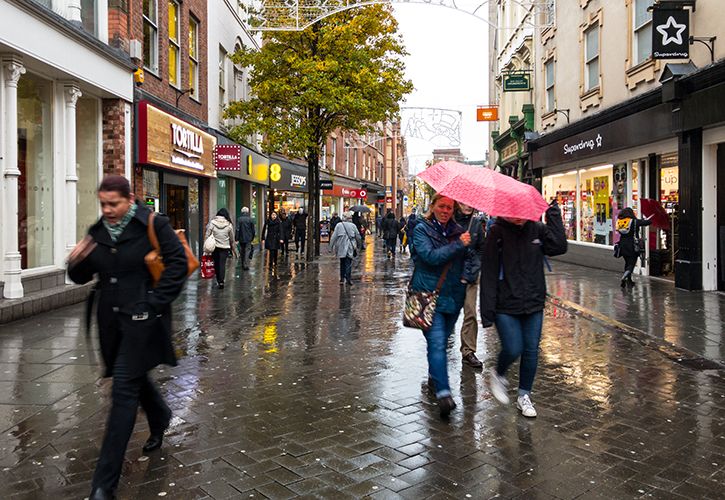UK DIY News
Dismal Start To The Summer Leads To Decline In Retail Footfall

- Footfall fell year on year by -1.4% in all UK retail destinations in June led by a drop in high street footfall (-2.3%). This may well be linked to many choosing to take early vacations given the dismal start to the summer season.
- Footfall in UK retail destinations rose by +2.7% from May to June driven by a boost in shopping centres (+3.8%) and high streets (+3.1%), and a more modest rise in retail parks (+0.7%). Much of these gains occurred in the second half of June coinciding with the Euro’s, Taylor Swift’s Eras Tour, and a heatwave.
- MRI Software’s recent Consumer Pulse survey revealed that 46.5% of consumers plan to vacation abroad this year with July and August being the prime months; this could lead to a quiet summer for retail.
Jenni Matthews, Marketing & Insights Director, OnLocation for Footfall Analytics at MRI Software, said:
Despite a positive second half for retail destinations in June, overall trends year on year failed to surpass 2023 levels. Footfall remained -1.4% lower in all UK retail destinations led predominantly by high street activity sitting -2.3% below 2023 levels. Shopping centres followed with a -1.3% decline however retail parks saw a marginal uplift of +0.5%. This is the first decline witnessed in June in both high streets and shopping centres since pre-pandemic times (2019).
The annual drop in activity could be attributed to many people deciding to take an early vacation given the dismal start to the summer season; a trend which retailers may well see continue into July and August. MRI Software’s recent Consumer Pulse Survey, which was carried out in May, revealed that 46.5% of those surveyed were planning to take a vacation abroad this year with July (+24.2%) and August (+34.1%) being the most popular months for this.
June was met with the beginnings of a summer of sport, live music events and a heatwave, creating the perfect recipe for a boost in footfall across all UK retail destinations month on month. Shopping centres led the charge witnessing a rise of +3.8% in activity followed by high streets (+3.1%) however retail parks saw a more muted trend with footfall rising by just +0.7%.
The beginning of the month was met with reduced activity which is probably attributed to the natural decline we see following the May school half-term break however this may have been exacerbated with the volatile weather during the first two weeks of the month leading to a week over week decline in footfall averaging -3.5% in all UK retail destinations with high streets feeling the greatest impact averaging a -4.1% decline.
The penultimate week of the month bought with it England’s second game of the Euro’s tournament, Taylor Swift’s arrival to the UK, and an unexpected heatwave – all of which contributed to both a boost in footfall and the economy. That week alone saw high streets see the greatest recovery with footfall rising by +7.3% from the week before. The effects of the warmer weather, sporting and music events was clearly evident in towns and cities with footfall rising week on week by +14.5% in office locations within Central London, +10% in Central London, and +7.1% in coastal towns. The England vs Denmark game had a noticeable impact on UK’s high streets with footfall rising by an average of +25% from 2pm – 11pm on Thursday, when compared to the week prior.
The ‘Taylor Swift Effect’ was noticeable in Wales’ high streets during the third week of the month as footfall rose by +11.4% from the previous week. This effect also likely contributed to the boost in Central London particularly on Saturday when activity was up +16.3% from the week before and +4.7% year on year.
GFK’s recent report highlighted a continued boost in consumer confidence for the third consecutive month with people’s sentiment around the general economic situation – both past and future – driving this forward. As the sector prepares for the Golden Quarter, it’s important for retail leaders to keep up with changing consumer trends, sentiments and behaviours so store planning (from staffing to energy and facilities management) can be managed effectively to cope with external factors including the weather, rail disruption, and city-wide events.
Source : MRI Software
Image : Jason Batterham / Shutterstock / 671551474
Insight DIY always publishes the latest news stories before anyone else and we find it to be an invaluable source of customer and market information.











































